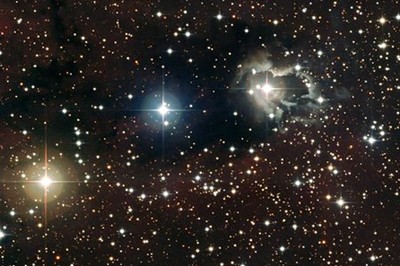 From the name, a reflection nebula is an interstellar cloud of dust particles that reflect light from a nearby star. This means that as opposed to an emission nebula that gives off various colors, a reflection nebula is unable to give off its own light, but has to rely solely on the light given off by a nearby source, typically a star.
From the name, a reflection nebula is an interstellar cloud of dust particles that reflect light from a nearby star. This means that as opposed to an emission nebula that gives off various colors, a reflection nebula is unable to give off its own light, but has to rely solely on the light given off by a nearby source, typically a star.
Because it only reflects or scatters the stars from a nearby star, the absorption spectrum of the nebula is similar to the spectrum of the illuminating stars. The same spectrum is emitted by the presence of different compounds and elements such as carbon, nickel, and iron while the light reflected by the presence of the dust particles. A reflection nebula often has a bright blue color because blue light is easier to reflect than the other types such as red.
Reflection nebulae have gained popularity among astronomers because the Herbig-Haro or streams of gas ejected from very young stars have been captured beside it. Other than that, these reflections of light are also a sight to behold. Currently there 500 known reflection nebulae with the nicest being the reflection nebulae illuminated by the stars from Pleiades. Another magnificent blue reflection nebula can be observed in the same area of the sky as the Pleiades and is called the Trifid Nebula. Although blue lighted nebulae are more popular and abundant, red reflection nebulae can also be found in the sky as represented by the nebula surrounding the red giant Antares.
